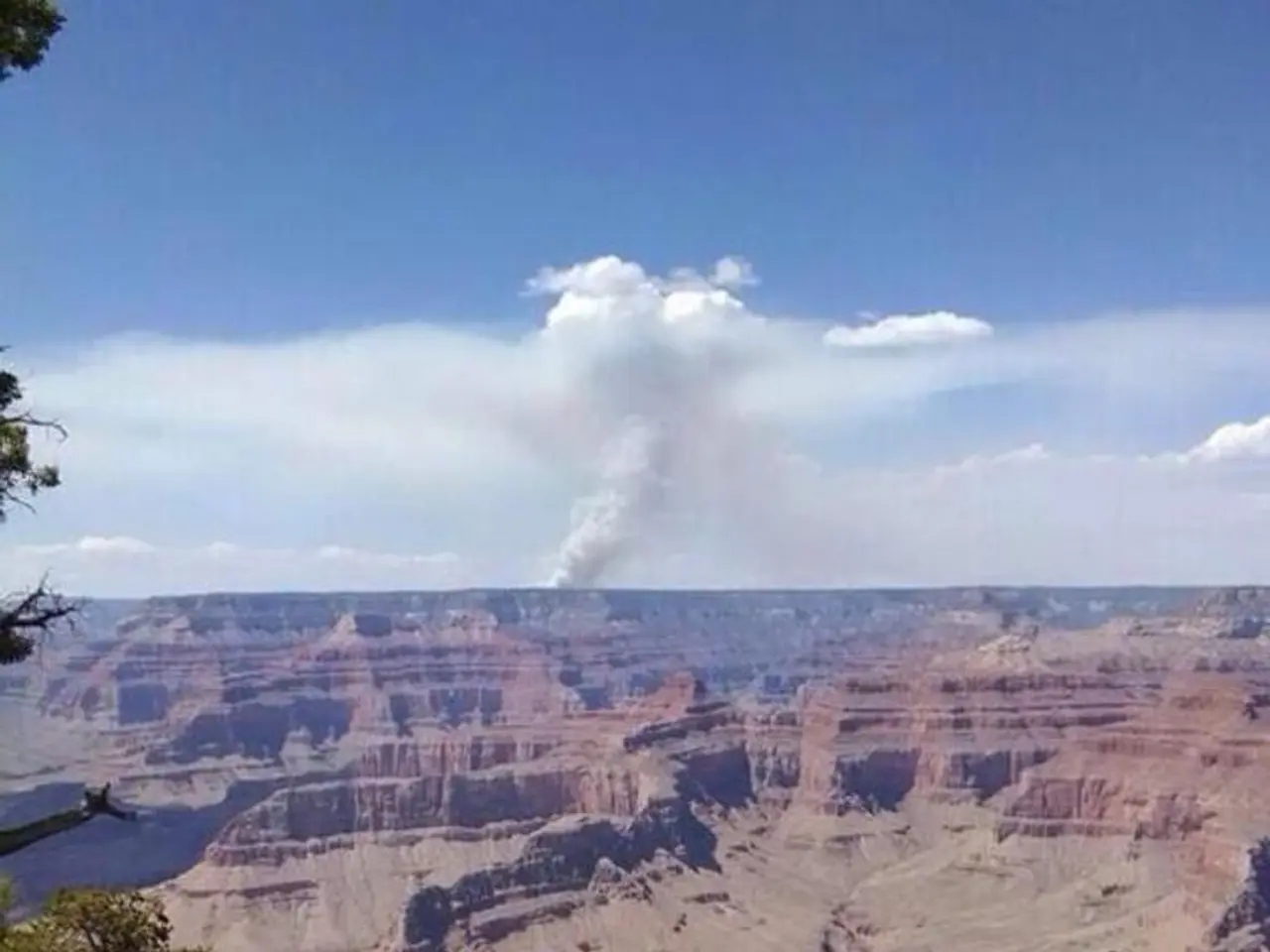Hiking Pathway: Bright Angel Trail
Exploring the Bright Angel Trail in Grand Canyon National Park
The Bright Angel Trail, located near Bright Angel Lodge on the South Rim of the Grand Canyon, offers a unique hiking experience that takes you through the heart of one of the world's natural wonders. Here's a guide to help you make the most of your adventure.
The Trail's History
The trail, once a private path that cost $1 (equivalent to about $40 today) to hike, was opened to the public after the National Park Service ended private control in 1927. The trail's name, Havasupai, means "people of the blue-green waters," referring to the colour of the Colorado River that runs through the Grand Canyon. The Havasupai people, who worked as laborers in the early 1900s, created much of what is seen at Grand Canyon National Park.
Preparing for the Hike
Water is available on the trail, but it is recommended to carry some with you. Starting early and carrying enough water is crucial, as there is no water on the trail except at Havasupai Gardens and Plateau Point (seasonal). Hiking early in the morning also helps avoid heat dangers in the canyon’s intense midday sun.
Choosing Your Turnaround Point
The National Park Service recommends Skeleton Point as the farthest turnaround for most day hikers due to difficulty and time considerations. However, hikers often choose from several key turnaround points based on their fitness and time availability.
| Turnaround Point | Total Distance (round trip) | Elevation Gain (round trip) | Estimated Time | Difficulty | Highlights | |-----------------------|-----------------------------|-----------------------------|----------------|---------------------------------|-----------------------------------| | 1.5 Mile Resthouse | 3 miles | ~1100 feet | 2-3 hours | Moderate | Pictographs, tunnels, canyon views | | 3 Mile Resthouse | 6 miles | ~2100 feet | 3-4 hours | Hard | Iconic canyon views | | Havasupai Gardens | 9 miles | ~3050 feet | 4-5 hours | Hard | Oasis with water, shade, camping | | Plateau Point | 12.5 miles | ~3200 feet | 6-7 hours | Hard | Panoramic Colorado River views | | Skeleton Point | Near Plateau Point (frequently cited) | Slightly less than Plateau Point | Recommended max for many day hikers | Hard, challenging elevation gain | Good formal turnaround to avoid risks |
Key Considerations
- Physical fitness and hiking experience: The trail descends steeply and requires a tough climb back up; 2,640 feet of elevation gain (about 0.5 miles straight uphill) is especially difficult for many hikers.
- Distance and time available: Longer distances (like to Plateau Point) require 6-7 hours total and are only advisable for strong, well-prepared hikers.
- Weather and heat: Hiking early in the morning helps avoid heat dangers in the canyon’s intense midday sun.
- Trail conditions and shuttle availability: Shuttle buses at the South Rim can assist access to the trailhead, but are seasonal, and other logistics like permits for camping at Havasupai Gardens may influence plans.
- Safety concerns: NPS discourages going beyond Havasupai Gardens as a day hike for most hikers due to increasing difficulty and risk.
Equipment Recommendations
A backpack, comfortable footwear, trekking poles, snacks, and electrolyte drinks are essential for the hike. Depending on your needs, gear recommendations include the Osprey Hikelite 26, Altra Lone Peak 9, Garmin inReach Mini 2, and AllTrails Plus. For safety, a satellite-enabled phone or satellite communicator can be helpful for emergencies.
The Journey Ahead
Whether you choose to turn around at the 1.5 Mile Resthouse, 3 Mile Resthouse, Havasupai Gardens, or Plateau Point, the Bright Angel Trail promises an unforgettable adventure. Just remember, the hike back up is much harder than going down, and it is recommended to expect the hike up to take about twice as long as the hike down.
Havasupai Gardens, a destination on the Bright Angel Trail, was formerly known as "Indian Garden" and some maps or signs may still refer to it as such. Camping on the Bright Angel Trail can be booked at Havasupai Garden on Recreation.gov. Snow and ice can linger on the upper sections in winter, especially in the morning, so microspikes are advised.
The hard part of the Bright Angel Trail hike comes when hiking back up to the South Rim after reaching the inner part of the Canyon. In 1901, Theodore Roosevelt ordered the Havasupai who lived at Havasupai Gardens to leave to make way for the park. Today, Havasupai Gardens remains a cultivated oasis, featuring a ranger station, toilets, picnic areas, a campground, and water.
In summary, most day hikers aim to reach Skeleton Point or Havasupai Gardens as turnaround points balancing manageable difficulty, time, and water availability. Stronger hikers may push to Plateau Point but require more preparation and should factor in the strenuous return climb. The Bright Angel Trail is the most iconic hike in Grand Canyon National Park, offering a journey through history, nature, and adventure.
[[1] National Park Service, Bright Angel Trail, Accessed 2022-03-03, https://www.nps.gov/grca/planyourvisit/bright-angle-trail.htm] [[2] National Park Service, Shuttle Services, Accessed 2022-03-03, https://www.nps.gov/grca/planyourvisit/shuttle-services.htm] [[3] National Park Service, Hiking Safety, Accessed 2022-03-03, https://www.nps.gov/grca/planyourvisit/hiking-safety.htm] [[4] National Park Service, Havasupai Gardens, Accessed 2022-03-03, https://www.nps.gov/grca/learn/nature/havasupai-gardens.htm] [[5] National Park Service, Skeleton Point, Accessed 2022-03-03, https://www.nps.gov/grca/learn/nature/skeleton-point.htm]
- Trekking along the Bright Angel Trail, a historic hiking path in Grand Canyon National Park, offers a unique exploration into one of the world's natural wonders.
- To ensure a successful hike, prepare by carrying enough water, starting early, and selecting a turnaround point like Skeleton Point based on fitness level and time availability.
- The Bright Angel Trail's gear essentials include a backpack, comfortable footwear, trekking poles, snacks, and electrolyte drinks, with options such as the Osprey Hikelite 26 and Altra Lone Peak 9 for backpack and footwear respectively.
- Regardless of the turnaround point, the Bright Angel Trail provides an unforgettable travel experience that blends hiking, sports, and lifestyle into a grand adventure.






